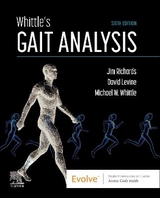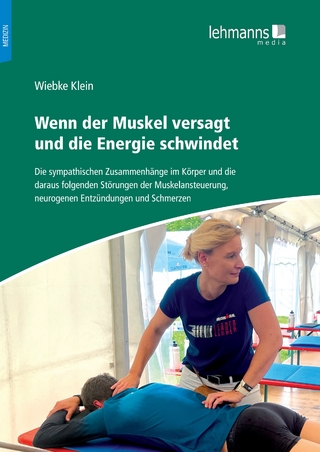
Whittle's Gait Analysis
Churchill Livingstone (Verlag)
978-0-7020-4265-2 (ISBN)
- Titel erscheint in neuer Auflage
- Artikel merken
Whittle's Gait Analysis - formerly known as Gait Analysis: an introduction - is now in its fifth edition with a new team of authors led by David Levine and Jim Richards. Working closely with Michael Whittle, the team maintains a clear and accessible approach to basic gait analysis. It will assist both students and clinicians in the diagnosis of and treatment plans for patients suffering from medical conditions that affect the way they walk.
Highly readable, the book builds upon the basics of anatomy, physiology and biomechanics
Describes both normal and pathological gait
Covers the range of methods available to perform gait analysis, from the very simple to the very complex.
Emphasizes the clinical applications of gait analysis
Chapters on gait assessment of neurological diseases and musculoskeletal conditions and prosthetics and orthotics
Methods of gait analysis
Design features including key points
A team of specialist contributors led by two internationally-renowned expert editors
60 illustrations, taking the total number to over 180
Evolve Resources containing video clips and animated skeletons of normal gait supported by MCQs, an image bank, online glossary and sources of further information. Log on to http://evolve.elsevier.com/Whittle/gait to register and start using these resources today!
Jim Richards is Professor of Biomechanics and research lead for the Allied Health Research Unit (AHRu) at the University of Central Lancashire in 2004. He has authored over 160 peer reviewed journal papers and written and edited several textbooks, including the 5th edition of Whittle's Gait Analysis (2012). He will take over from David Levine as the lead editor for this edition. David Levine is Professor & Walter M. Cline Chair of Excellence in physical therapy at the University of Tennessee at Chattanooga. He was lead editor for the 5th edition of Whittle's Gait Analysis
Chapter 1 Basic Sciences Anatomy Physiology Motor control Biomechanics
Chapter 2 Normal Gait Walking and gait History Terminology used in gait analysis Outline of the gait cycle The gait cycle in detail Ground reaction forces Support moment Energy consumption Optimization of energy usage Starting and stopping Other varieties of gait Changes in Gait with Age
Chapter 3 Pathological and other abnormal gaits Specific gait abnormalities Walking aids Treadmill gait
Chapter 4 Methods of gait analysis Visual gait analysis Temporal and Spatial Parameters during Gait Measurement of Temporal and Spatial Parameters during Gait Camera Based Motion Analysis Active marker systems Accelerometers Gyroscopes, Magnetic Fields and Motion Capture Suits Measuring Force and Pressure Pressure beneath the foot Measuring Muscle Activity Measuring Energy Expenditure Combined kinetic/kinematic systems
Chapter 5 Applications of gait analysis Clinical gait assessment Conditions benefiting from gait assessment Future developments Conclusion
Chapter 6 Gait assessment of neurological diseases Gait assessment in Cerebral palsy Gait assessment in Stroke Gait assessment in Parkinson's disease Gait assessment in Muscular dystrophy
Chapter 7 Gait analysis in musculoskeletal conditions and prosthetics and orthotics Total hip replacement Gait analysis in knee osteoarthritis High tibial knee osteotomy Prosthetics and orthotics Amputee gait Orthotic gait
Index
| Erscheint lt. Verlag | 6.7.2012 |
|---|---|
| Zusatzinfo | Approx. 135 illustrations (120 in full color); Illustrations |
| Verlagsort | London |
| Sprache | englisch |
| Maße | 189 x 246 mm |
| Themenwelt | Medizin / Pharmazie ► Medizinische Fachgebiete ► Sportmedizin |
| ISBN-10 | 0-7020-4265-X / 070204265X |
| ISBN-13 | 978-0-7020-4265-2 / 9780702042652 |
| Zustand | Neuware |
| Informationen gemäß Produktsicherheitsverordnung (GPSR) | |
| Haben Sie eine Frage zum Produkt? |
aus dem Bereich



